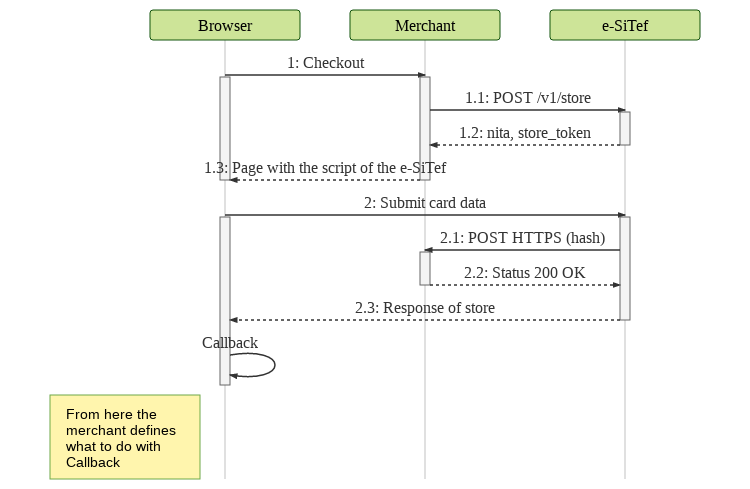JavaScript Store
The JavaScript Store interface allows the customer's card data to be collected by e-SiTef on the merchant's page, exempting the virtual store from manipulating sensitive information and leaving this task under the responsibility of e-SiTef's PCI certified environment.
This interface is recommended to merchants who desire to have their own checkout page, while having a high security standard at the same time.
Flow

Flow description:
- 1. The customer sends purchase data and proceeds to the store screen.
- 1.1. The Virtual Store creates a store transaction on e-SiTef, sending the
customer_idandmerchant_usnparameters. - 1.2. e-SiTef returns a NITA and a Store Token to the store.
- 1.3. The store displays its page to the customer, containing e-SiTef's script and the card data fields with the classes specified in Fields with card data.
- 1.1. The Virtual Store creates a store transaction on e-SiTef, sending the
- 2. Customer fills their card data and submit card data. Call e-SiTef's store script,passing the NITA, the Store Token, their Merchant ID, Authorizer ID and callback functions (merchant's procedures that will be called after the store).
- 2.1. Synchronously, e-SiTef will do an HTTPS POST on the store URL entered by the merchant and registered in the e-SiTef backoffice. The POST sent will contain the stored card hash. Learn more.
- 2.2. The response of the virtual store referring to POST HTTPS mandatorily must be " 200 OK".
- 2.3. e-SiTef returns the store result,including code, message, transaction status, merchant usn and nita.
- 2.4. Merchant's callback is called.